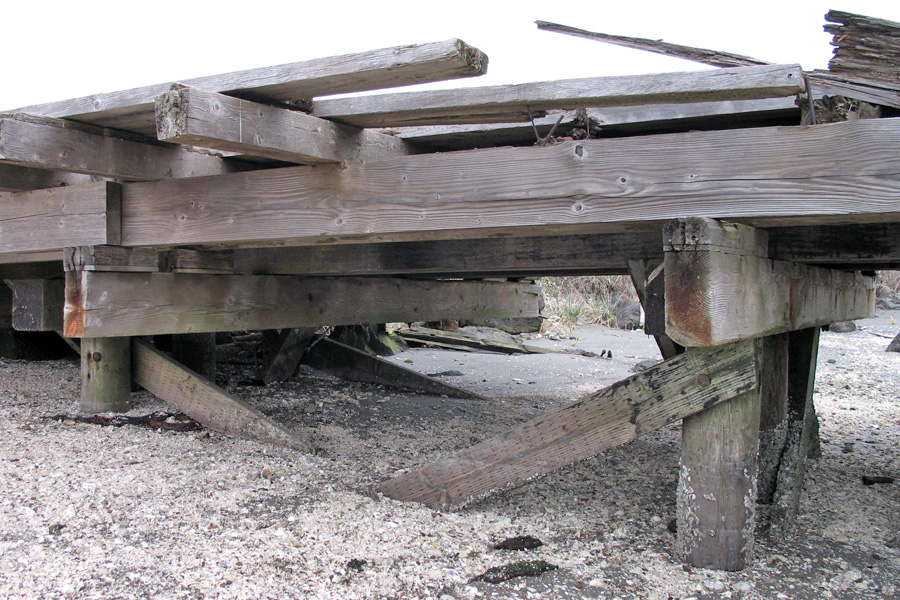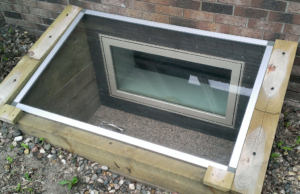What Are Dock Inspections?
Understanding the Importance and Process

Dock inspections are a part of maintaining safety and operational efficiency at any maritime facility. Dock inspections not only detect any potential issues but also help prevent accidents that could disrupt operations or, worse, cause harm to people. It’s a process that requires expertise, meticulousness, and an understanding of the different components that make up a dock. In this blog post, we’ll shed light on what dock inspections are, why they’re important, and how they’re carried out. With this knowledge, you’ll be better equipped to ensure that your dock remains a safe and efficient place for vessels and their crews.
What Are Dock Inspections?
Definition of Dock Inspections
Dock inspections refer to the process of examining and evaluating the condition of a dock and its related components. These inspections are typically carried out by qualified professionals, such as engineers or safety inspectors, who possess the necessary knowledge and expertise to identify potential issues or hazards.
During a dock inspection, various aspects are assessed, including the structural integrity of the dock, the condition of the decking material, the stability of the support system, the functionality of safety features, and compliance with relevant regulations and standards. The purpose of these inspections is to detect any deficiencies, weaknesses, or violations that could compromise the safety of the dock and its users.
Importance of Dock Inspections
Dock inspections play a vital role in ensuring the safety of everyone who uses or comes into contact with the dock. By regularly inspecting and maintaining docks, potential hazards can be identified and addressed promptly, reducing the risk of accidents, injuries, or property damage.
- Safety: Dock inspections prioritize safety by identifying and addressing potential hazards such as loose boards, corroded metal components, or faulty safety equipment. This helps prevent accidents, falls, or structural failures that could endanger dock users.
- Compliance: Regular inspections ensure that docks meet the necessary safety standards and comply with relevant regulations. This is particularly important for commercial docks or those used for public access, as failure to comply can result in legal and financial consequences.
- Longevity and Cost Savings: Timely inspections can help identify minor issues before they escalate into major problems, potentially saving substantial repair costs. By addressing maintenance needs promptly, dock owners can prolong the lifespan of their docks and avoid expensive repairs or replacements.
- Peace of Mind: Regular dock inspections provide peace of mind to dock owners, operators, and users. Knowing that the dock has been thoroughly examined and deemed safe instills confidence and ensures a worry-free experience.
Types of Dock Inspections
Pre-Installation Inspections
Before a dock is installed, a pre-installation inspection is conducted to ensure that the site is suitable for the construction of the dock. This inspection involves evaluating several factors, such as the condition of the shoreline, the stability of the soil or substrate, and the depth and quality of the water. By thoroughly assessing these aspects, any potential hazards or limitations can be identified, allowing for necessary adjustments to be made during the planning and design phase. Pre-installation inspections are crucial to ensure that the dock is constructed in a safe and efficient manner.
Routine Inspections
Routine inspections are conducted periodically to assess the overall condition and safety of the dock. These inspections aim to identify any signs of wear and tear, damage, or structural weaknesses that could compromise the integrity of the dock. During a routine inspection, various components of the dock, such as the decking, support beams, connectors, and hardware, are thoroughly examined. Any loose or deteriorating parts are identified, and appropriate repairs or replacements are recommended. Routine inspections are essential to detect and address potential issues before they escalate and pose a risk to users or cause further damage to the dock.
Post-Installation Inspections
After a dock has been installed, a post-installation inspection is conducted to ensure that it meets all the necessary safety standards and regulations. This inspection is typically performed by a qualified professional who carefully examines the dock’s construction, materials, and adherence to building codes and regulations. The post-installation inspection aims to verify that the dock has been built according to the approved plans and specifications. It also ensures that all necessary safety measures, such as handrails, lighting, and signage, are in place and functioning correctly. Post-installation inspections provide peace of mind that the dock is safe for use and compliant with relevant regulations.
Components of Dock Inspections
Dock inspections are an essential part of ensuring the safety and functionality of a dock. These inspections involve a thorough examination of various components to identify any potential issues or hazards. In this section, we will explore the three main components of dock inspections: structural inspection, electrical inspection, and safety inspection.
1. Structural Inspection
The structural integrity of a dock is of utmost importance to prevent accidents and ensure its longevity. During a structural inspection, a trained professional examines the dock’s physical components, such as the decking, pilings, supports, and connections.
They inspect for any signs of decay, rot, or damage that could compromise the dock’s stability. This includes checking for loose or missing fasteners, cracks in the wood or concrete, and signs of excessive wear and tear. The inspector may also assess the dock’s load-bearing capacity to ensure it can safely support the intended weight.
2. Electrical Inspection
Dock electrical systems are prone to specific risks due to their exposure to water, making electrical inspections crucial for safety. This inspection involves a thorough examination of the electrical components, including wiring, outlets, lighting fixtures, and any other electrical devices installed on the dock.
The inspector checks for any exposed or damaged wiring that could pose a risk of electrical shock. They also ensure that all electrical components are properly grounded and protected from water infiltration. Additionally, the inspector may verify that the dock’s electrical system meets the necessary code requirements and regulations.
3. Safety Inspection
The safety of dock users is paramount, making safety inspections an integral part of the overall inspection process. Safety inspections involve a comprehensive assessment of safety measures, equipment, and potential hazards present on the dock.
During a safety inspection, the inspector ensures that the dock has adequate safety features in place, such as handrails, guardrails, and non-slip surfaces. They also examine the condition of ladders, fenders, and mooring components to ensure they are in good working order. Additionally, the inspector may identify any potential hazards, such as protruding nails or sharp edges, that could cause injuries.
By conducting regular dock inspections encompassing structural, electrical, and safety aspects, dock owners can proactively address any issues and maintain a safe and functional dock. These inspections help reduce the risk of accidents, extend the lifespan of the dock, and provide peace of mind for dock users.
Dock Inspection Process
Dock inspections are an essential part of maintaining the safety and functionality of waterfront structures. These inspections ensure that docks and piers are in good condition, meet regulatory standards, and can withstand the demands of their intended use. In this section, we will discuss the four key steps involved in the dock inspection process: Planning and Preparation, Visual Inspection, Testing and Measurements, and Documentation.
Planning and Preparation
Before conducting a dock inspection, it is crucial to plan and prepare for the task at hand. This involves gathering relevant information about the dock, its construction, and any previous inspection reports. The inspector should familiarize themselves with the specific regulations and standards that apply to the dock, as well as any unique features or challenges that may be present.
Visual Inspection
The visual inspection phase is where the inspector examines the dock’s components and structure for any signs of damage, deterioration, or non-compliance. This involves carefully inspecting the dock’s pilings, decking, railings, connections, and other key elements.
During the visual inspection, the inspector will look for visible cracks, corrosion, rot, loose or missing fasteners, excessive wear, and other indicators of potential issues. They will also assess whether the dock is level and properly aligned, as well as check for any signs of excessive movement or settlement.
Testing and Measurements
In addition to the visual inspection, certain tests and measurements may be conducted to assess the dock’s structural integrity and load-carrying capacity. These tests can include load testing, deflection measurements, and material strength assessments.
Load testing involves applying known weights or forces to the dock to evaluate its response and determine if it meets the required load-bearing capacity. Deflection measurements assess the amount of bending or sagging that occurs when the dock is subjected to a given load. Material strength assessments involve taking samples and conducting laboratory tests to determine the strength and durability of the dock’s materials.
Documentation
The final step in the dock inspection process is documenting the findings and recommendations. This typically involves creating a detailed inspection report that outlines the inspector’s observations, measurements, test results, and any identified deficiencies or areas of concern.
The inspection report serves as a valuable record of the dock’s condition and can be used to develop maintenance and repair plans. It may also be required for regulatory compliance purposes or for insurance and liability purposes. Accurate and comprehensive documentation is essential for tracking the dock’s condition over time and ensuring that necessary actions are taken to address any identified issues.
Benefits of Dock Inspections
Ensuring Compliance with Regulations
One of the primary benefits of dock inspections is ensuring compliance with regulations. Docks are subject to various safety guidelines and standards set by government authorities and industry organizations. Conducting regular inspections helps you stay up to date with these regulations and ensure that your dock meets all the necessary requirements. By adhering to the rules and regulations, you not only avoid potential fines or legal consequences but also demonstrate your commitment to creating a safe working environment.
Preventing Accidents and Injuries
Another crucial benefit of dock inspections is the prevention of accidents and injuries. Docks can be hazardous areas due to their exposure to water, heavy equipment, and frequent movement of goods. By regularly inspecting your dock, you can identify potential safety hazards such as loose or damaged structures, slippery surfaces, inadequate lighting, or faulty equipment. Addressing these issues promptly reduces the risk of accidents and minimizes the chances of employees or visitors getting injured. By prioritizing safety through inspections, you can create a secure environment for everyone involved.
Extending the Lifespan of the Dock
Dock inspections also contribute to extending the lifespan of your dock. Over time, docks may be subjected to wear and tear, corrosion, or structural damage due to various factors such as weather conditions, water exposure, and heavy loads. Regular inspections allow you to identify these issues early on and implement appropriate maintenance and repair measures. By addressing small problems before they escalate, you can prevent further deterioration and significantly extend the lifespan of your dock. This proactive approach not only saves you money on costly repairs in the long run but also ensures that your dock remains functional and efficient for an extended period.
Hiring Professionals for Dock Inspections
In the world of dock inspections, it’s crucial to ensure that your facility meets the necessary safety standards. One way to guarantee this is by hiring professionals who specialize in dock inspections. These experts have the knowledge and experience to thoroughly assess your dock and identify any potential hazards or issues. In this section, we will discuss the qualifications and experience you should look for when hiring professionals for dock inspections, the cost considerations involved, and how to choose the right inspection service.
Qualifications and Experience
When it comes to dock inspections, you want to hire professionals who have the necessary qualifications and experience to provide a thorough assessment. Look for inspectors who are certified and have extensive knowledge of dock safety regulations and industry best practices. A reputable inspection service will have inspectors who are well-versed in OSHA (Occupational Safety and Health Administration) guidelines, as well as other relevant safety standards.
Additionally, consider the experience of the inspection service. Experienced professionals have likely encountered a wide range of dock-related issues and can provide valuable insights and recommendations based on their past work. They will know what to look for and how to address any potential safety concerns, ensuring that your dock operates at its highest level of safety and efficiency.
Cost Considerations
When hiring professionals for dock inspections, it’s important to consider the cost involved. The price of an inspection can vary depending on factors such as the size and complexity of your dock, the scope of the inspection, and the reputation of the inspection service. While it may be tempting to opt for the cheapest option, keep in mind that the quality of the inspection should be your top priority.
A comprehensive inspection conducted by experienced professionals may cost more upfront, but it can save you money in the long run by preventing accidents, minimizing downtime, and ensuring compliance with safety regulations. Remember that the cost of an inspection is an investment in the safety and longevity of your dock.
Choosing the Right Inspection Service
Choosing the right inspection service is crucial for the success of your dock inspections. Start by researching and considering multiple options. Look for reviews and testimonials from previous clients to gauge the quality of their work. You can also ask for recommendations from industry peers or associations.
When evaluating inspection services, consider their expertise, reputation, and the level of customer service they provide. A reliable service will be responsive to your inquiries, answer your questions promptly, and provide clear and detailed reports after the inspection. Additionally, inquire about any additional services they offer, such as maintenance recommendations or training programs, as these can add further value to their service.
Conclusion
Dock inspections are a crucial aspect of ensuring the safety and functionality of docks. These inspections involve a thorough examination of various components, including structural integrity, electrical systems, and safety features. By conducting regular inspections, dock owners can identify any potential issues or hazards and take necessary measures to address them promptly. This proactive approach not only enhances the overall safety of the dock but also helps in preventing accidents and minimizing potential liabilities. Dock inspections should be performed by qualified professionals who possess the necessary expertise and knowledge to assess and evaluate all aspects of the dock. Remember, a well-maintained and safe dock not only provides peace of mind but also contributes to an enjoyable boating experience.





